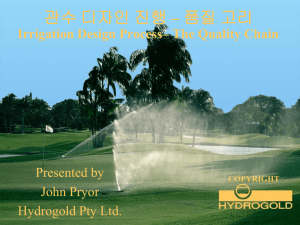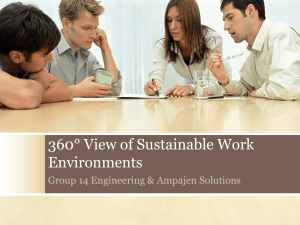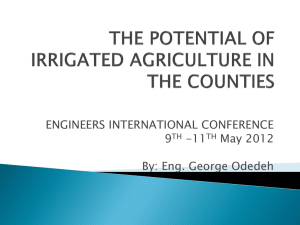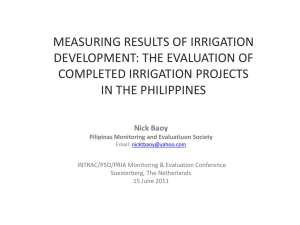Document
advertisement
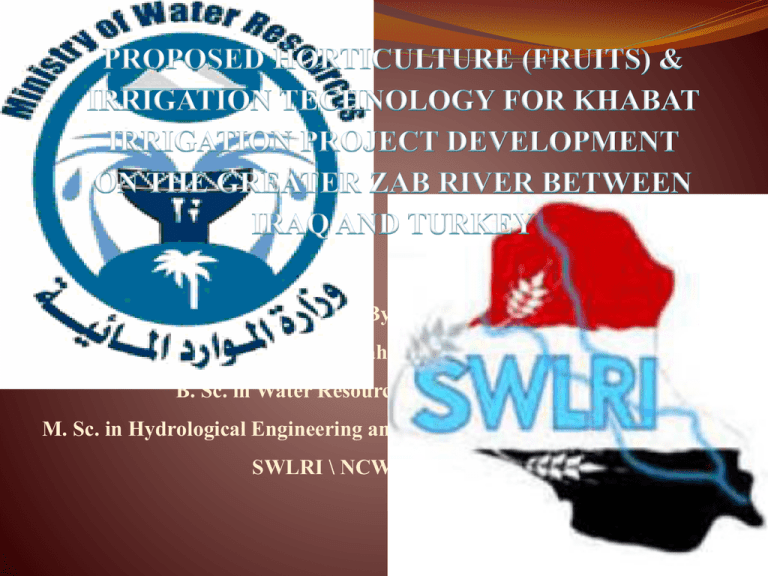
By: Saddam Qahtan Waheed B. Sc. in Water Resources Engineering (2007) M. Sc. in Hydrological Engineering and Remote Sensing Techniques (2010) SWLRI \ NCWRM \ MoWR INTRODUCTION Increasing water demand for crop production and other uses (power generation, transport, industry, municipal, recreational, environmental, etc.) Trans-boundary river and tributaries shared by more than one country No bi-lateral agreement Uncontrolled infrastructure development in neighboring countries; i.e. dams Diverting water from some rivers originating in Iran Total annual water in Tigers River (NCWRM, 2011) Duration Total annual water form Tigris River Remarks 1932 - 1998 49.2 billion m3 Natural 1999 - 2011 33.1 billion m3 After dams construction in the upstream Annual Inflows of Tigris River Total annual water in Euphrates River (NCWRM, 2011) Duration Total annual water form Euphrates River Remarks 1932 - 1972 30.4 billion m3 Before dams construction in the upstream 1973 - 1989 26.2 billion m3 After construction of Kipan dam in the upstream 1990 - 2000 19.7 billion m3 After filling of Ataturk dam 2001 - 2011 12.8 billion m3 After increasing of dams construction in the upstream Annual Inflows of Euphrates River CHANGES IN WATER INFLOWS (1932 to 2011) OBJECTIVES OF THE STUDY 1. To investigate the feasibility of using the whole irrigable land to grow cash crops. 2. To develop the area as orchards and construct trickle irrigation system in the area to conserve water. 3. To increase crop production then export part of the products and use the returns to import wheat. MATERIALS AND METHODS The study involves the following activities: 1. Calculating the benefit from Khabat irrigation project in the current status, 2. Replacing the type of irrigation system from surface to trickle systems, 3. Changing cropping pattern in the whole project to orchards, 4. Calculating the benefits from the project after development, and 5. Comparing the benefits from the project before and after development. KHABAT IRRIGATION PROJECT • Location: Northern part of Iraq. • Total command area: 10,500 hectare • Total irrigated area: 3,000 hectare • Current irrigation systems: Surface irrigation systems • Average conveyance efficiency: 85 % • Average on-farm efficiency: 25 % Layout of Khabat irrigation project PROPOSED DEVELOPMENT • Upgrading irrigation practices • Changing the cropping patterns RESULTING IN: Increasing ratio = Trickle irrigation efficiency Furrow irrigation efficiency = 90 % 25% = 3.6 Cultivated area after development = Increasing ratio × old area = 3.6 × 3,000 = 10,800 hectare > (10,500 hectare); ESPECIAL CONSIDERATIONS • The total cost of upgrading 10,500 ha. to trickle irrigation: 10,500 × 3,500 = $36,750,000 • Economic life: 15 years • Maintenance costs: Estimated in 5% of total cost • Replacement of emitters and laterals every three years (30% of total cost) • The cost of planting 10,500 ha of orchards will be: 380 × 10,500 = $ 3,990,000. • Initial orchard production is after 3 years (2,600 kg/ha.) ESPECIAL CONSIDERATIONS (cont…) • Maximum orchard production is at the 6th year (4,600 kg/ha) • Using fertilizers and herbicides, production expected to increase to 5,000 kg/ha in the 5th year; 5,200 kg/ha in the 6th year. • The yearly cost of fertilizes and herbicides is about ($35,000 + $43,000 = $78,000), • The operational cost of the trickle irrigation system: Electrical power supply: requirement of about 204,940 kw/day ≈ $ 3,989,000 BENEFIT ANALYSIS BEFORE AND AFTER DEVELOPMENT • Calculate the benefit from the project before development: cost production versus selling • Calculate the production cost of each crop; • Calculate the benefits from the crops ANNUAL NET BENEFITS FROM THE PROJECT BEFORE THE DEVELOPMENT - The net benefit of the project is $ 872,850. - The highest benefit of the crop type is the fruits orchards (1690 $/ha./year) and the lowest is barely (100 $/ha./year) Annual benefit from each crop type in $. • The benefit from the project after development was calculated by calculating all costs. • Total cost of the developing is a bank loan, it increases every year by 10% (compound interest). • The construction of new irrigation system can be covered after 10 years. Expected returns of the project after development Expected bank loan payback payment Cost of service and maintenance Cost of planting Year Cost of changing the emitters & laterals Cost of fertilizes and herbicides Cost of electric power 1 0 1,837,500 3,990,000 78,000 2 0 1,837,500 0 3 11,025,000 1,102,500 4 0 5 Loan Total loan 3,989,000 36,750,000 78,000 3,989,000 0 78,000 1,837,500 0 0 1,837,500 6 11,025,000 7 Loan after the interest Payment Remaining 46,644,500 51,308,950 -872,850 52,181,800 52,181,800 58,086,300 63,894,930 -872,850 64,767,780 3,989,000 64,767,780 80,962,280 89,058,508 12,777,150 76,281,358 78,000 3,989,000 76,281,358 82,185,858 90,404,444 23,277,150 67,127,294 0 78,000 3,989,000 67,127,294 73,031,794 80,334,973 25,377,150 54,957,823 1,102,500 0 78,000 3,989,000 54,957,823 71,152,323 78,267,555 26,427,150 51,840,405 0 1,837,500 0 78,000 3,989,000 51,840,405 57,744,905 63,519,396 26,427,150 37,092,246 8 0 1,837,500 0 78,000 3,989,000 37,092,246 42,996,746 47,296,421 26,427,150 20,869,271 9 11,025,000 1,102,500 0 78,000 3,989,000 20,869,271 37,063,771 40,770,148 26,427,150 14342997.72 10 0 1,837,500 0 78,000 3,989,000 14,342,998 20,247,498 22,272,247 26,427,150 -4,154,903 11 0 1,837,500 0 78,000 3,989,000 -4,154,903 1,749,597 1,924,557 26,427,150 -24,502,593 12 11,025,000 1,102,500 0 78,000 3,989,000 -24,502,593 -8,308,093 -9,138,902 26,427,150 -35,566,052 13 0 1,837,500 0 78,000 3,989,000 -35,566,052 -29,661,552 -32,627,707 26,427,150 -59,054,857 14 0 1,837,500 0 78,000 3,989,000 -59,054,857 -53,150,357 -58,465,393 26,427,150 -84,892,543 COMPARING THE BENEFITS • Net benefit , new system versus old system is about $ 84,892,500; • New system more beneficial than the old system by 6.5 times: net benifit after dev. net benifit before dev. = $84,892,500 $ 872,850 ×15 ≈ 6.5 • Orchards are more beneficial than other crop types, but their returns start after three years. They also required water all year around. • By using new irrigation systems like trickle, sprinkle, or micro-sprinkler: • The irrigated area will be increased, • The number of farmers will increase and the migration reduced, • The import of orchard products will be reduced. CONCLUSIONS 1. Due to the lack of water in Iraq in the last years many irrigation projects are suffering from that and the net irrigated areas were decreased to less than half. 2. The net irrigated area can be increased to three times by changing the irrigation systems from surface to trickle. 3. The net benefit from Khabat irrigation project in the current condition is $872,850 per year and after development is $84,892,500 per 15 year, $5,659,500 as average per year. 4. The net benefit from Khabat irrigation project after development is more than net benefit before the development by 6.5 times. Thanks for Listening







